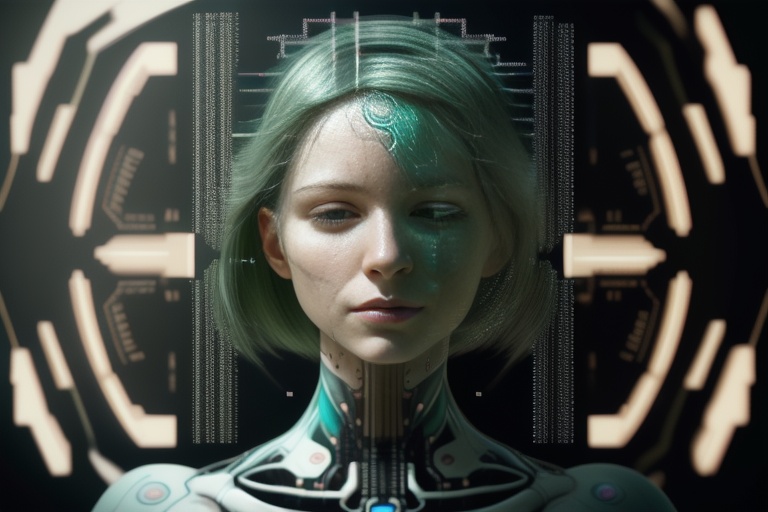Artificial intelligence (AI) has rapidly integrated itself into various facets of our lives, influencing everything from the convenience of email automation to the advancement of healthcare facilities. Yet, as technology evolves, a new player enters the arena—augmented intelligence. Both AI and augmented intelligence strive toward innovation and efficiency, but they take different paths and hold distinct implications for human involvement. This article will dissect the nuances between these two fields and contemplate how they are set to alter the landscape of our technological society.
Artificial intelligence (AI) has rapidly integrated itself into various facets of our lives, influencing everything from the convenience of email automation to the advancement of healthcare facilities. Yet, as technology evolves, a new player enters the arena—augmented intelligence. Both AI and augmented intelligence strive toward innovation and efficiency, but they take different paths and hold distinct implications for human involvement. This article will dissect the nuances between these two fields and contemplate how they are set to alter the landscape of our technological society.
Understanding Artificial Intelligence
AI is a broad field of study encompassing the creation of intelligent machines and software designed to replicate human cognition and decision-making. The primary goal of AI is to streamline and accelerate processes without human interruption. It achieves this through varying degrees of autonomy, from conducting analytical decision-making to performing complex actions independently.
Utilizing machine learning algorithms and vast data sets, AI systems can learn from experience, adapt to new inputs, and perform human-like tasks. The ultimate vision in AI development is to reach a point where machines can handle processes and make determinations with little to no human intervention—potentially leading to a future where certain jobs once occupied by humans become fully automated.
The Role of Augmented Intelligence
Augmented intelligence takes a supplementary approach. Instead of replacing human input, it aims to boost our cognitive abilities, acting as a trusted assistant that provides insights drawn from deep learning and machine learning outputs. In essence, augmented intelligence is a symbiotic relationship between human and machine intelligence. It recognizes the value that human judgment and experience bring to the table, particularly when navigating complex situations or decisions that demand contextual awareness and adaptability.
This form of intelligence presents itself as a support tool that processes and synthesizes information at scales far beyond human capacity. It then distills this data into actionable recommendations, leaving humans with the final say on the course of action. Through this model, augmented intelligence can refine product strategies, enhance service delivery, or inform decision-making processes—all without stripping humans of their agency.
Augmented Intelligence in Practice
To paint a clearer picture of how augmented intelligence functions in a real-world setting, let's examine its application within the retail industry. Merchandisers, armed with insights from augmented intelligence systems that have analyzed comprehensive shopper data, can devise more effective product placements. These insights enable retailers to refine their inventory strategies and tailor their marketing efforts, leading to improved sales performance.
The automotive industry presents another striking example of augmented intelligence at work. Consider Tesla's vehicles, which incorporate augmented intelligence into their autopilot features. While the car can navigate roads with considerable autonomy, the system still relies on human oversight. In urgent situations—such as the need for sudden braking—augmented intelligence swiftly alerts the driver to take control, blending AI's capabilities with human reflex and judgment.
The Need for Social Intelligence
One of the salient distinctions between AI and augmented intelligence is the latter's incorporation of social intelligence. Unlike AI systems, which primarily seek to emulate human intelligence, augmented intelligence leverages this quality to function alongside humans. It appreciates the subtleties of human behaviors, tasks, and decision-making nuances that infuse processes with empathy, ethics, and contextual understanding—traits that are, so far, uniquely human.
In the dynamic interplay between AI and augmented intelligence, social intelligence plays a pivotal role. It ensures that technologies do not overlook the very human perspectives that are crucial in making balanced and conscientious decisions.
The Complementary Power of Augmented Intelligence
In sum, augmented intelligence is not about superseding human intellect; rather, it exists to amplify it. It serves as an ally that enhances our problem-solving skills, sharpens our analysis, and helps us navigate an increasingly complex world with confidence.
As augmented intelligence continues to evolve and integrate into more sectors, it will prove instrumental in developing and refining AI systems that can reflect ethical standards and human values. This partnership promises to benefit humanity vastly by improving processes, fostering innovation, and maintaining the essential human touch in the age of machines.
Looking Ahead
Both AI and augmented intelligence will undoubtedly remain significant forces in shaping our society. AI introduces vast potential for the automation of myriad processes across industries. In contrast, augmented intelligence underscores the indispensable value of human insight, prompting us to contribute our sociocultural understanding to the tasks at hand. As we move forward, the interplay of these technologies will lead to breakthroughs that balance the need for efficiency with the necessity of human engagement.
Embracing augmented intelligence invites us to unlock the full potency of AI while safeguarding our irreplaceable capacity for complex reasoning and informed decision-making. The journey ahead is poised to be filled with transformative applications of both AI and augmented intelligence across various domains, enhancing our lives and work in ways we have yet to fully realize. Continue to follow our coverage as we delve deeper into real-world applications, challenges, and the boundless potential of these technologies to reshape the world we live in.
Information for this article was gathered from the following source.

